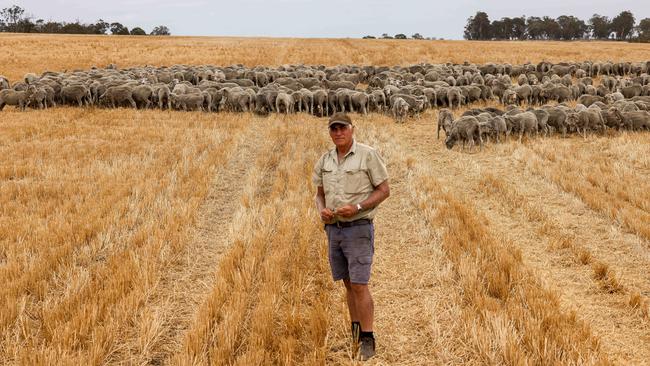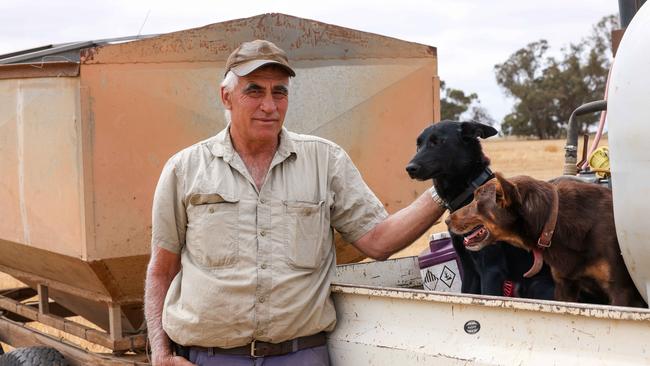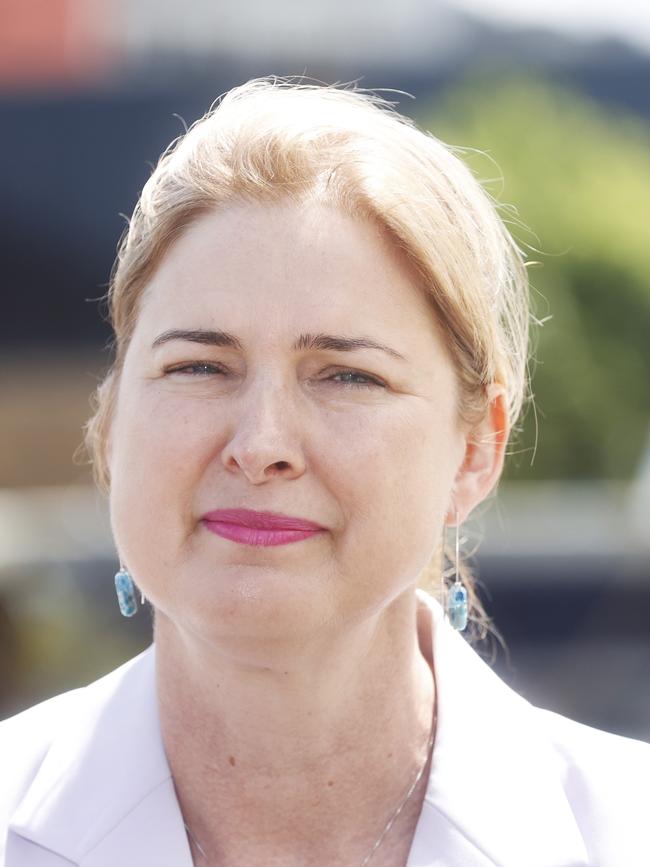Sheep farmers turning away from wool amid profitability squeeze
Wool producers have been finding it hard to make a buck. They say government policy on live sheep exports has forced them to consider their future.

West Australian farmer Peter Reid has ridden the highs and lows of the wool industry for his entire working life and knows all about the good times and the bad.
He says the current state of the sector is as bad as he’s ever seen it, on par with the dark days of the early 1990s when deregulation obliterated the wool price. “The difference is that was a marketing mishap, it wasn’t political interference, so it was easier to ride that out,” Reid says.
“This is beyond normal market fluctuations.”
The interference he’s referring to is the Albanese government’s legislation, passed last year, outlawing live sheep exports from May 2028. It has already sapped the remaining confidence in the sector, influenced sheep prices nationally and taken out a vital cog in the wool business in WA.
Farmers like Reid, who has a mixed cropping and sheep enterprise in the WA Great Southern region, are considering their future as wool producers amid profitability woes felt throughout the entire industry.
Already, WA farmers are reducing the size of their merino flocks or dispersing them completely, lowering the state’s expected wool production this year by 18.8 per cent to a low not seen in a century. It is forecast to decrease by another 20 to 25 per cent over the next two years.
“(Wool) has never got back to its heyday, but it bumps along and pays its bills and with live exports we had the meat market as well,” Reid says. “For our land here, and the way we operate, it has been the best model.
“The two together have given us a really good income. Profitability has been good.”
Profitability, not just in WA, is now in the spotlight, with farmers throughout the nation sending their merinos to the abattoir and cutting back on breeding.
Australian wool is facing its biggest crisis since deregulation and the once vaunted merino risks becoming a niche breed as farmers abandon the sector. They blame low wool prices, soaring labour costs for shearing and a diminishing textile market share.
Reid says the live export ban exacerbated the problem in WA and farmers have accused federal Labor of failing to understand how live exports were intrinsically linked to the wool sector.
Market analysts and industry experts had explained to the government how exporters paid good money for older merinos, or lambs that were not fat enough for slaughter. They said the boats to the Middle East provided an alternative market for sheep that were essentially worthless to domestic abattoirs.
“Usually I would send 2500 to 3000 sheep on an export boat (annually),” Reid says. “Not only do they take the sort of sheep we’ve got, but they put a floor on the market.”
In WA, the abattoirs are already running at capacity and two have recently shut down, meaning there is little demand for sheep bred more for producing quality wool than meat.
Last year, with the live export ships filled with de-stocked merinos, drought ravaging the state and high costs to transport stock to eastern meat processors, farmers could not even give their sheep away.
With declining pasture and water supplies and nowhere to turn, some farmers, Reid included, were forced to shoot sheep. The sheep that were fat enough to justify the transport costs were sent across the Nullarbor by truck.
They swamped eastern markets and drove down prices for producers in the eastern states, just as the Australian Competition & Consumer Commission, among others, had warned.
“The guys in the east have been flooded with cheap sheep that we can’t sell over here,” Reid says. “The whole thing has depressed the entire market.”

Reid has stopped breeding merinos and next year his shearing numbers will drop from 15000 to 8000. “In five or 10 years we could be looking at having no sheep shorn on this farm,” he says.
“It could be quicker than that.”
The Albanese government took its live sheep export ban policy to the 2022 election after years of pressure from animal welfare groups. It followed incidents in 2017 involving mass mortalities, which led to significant reforms of the industry.
The federal Coalition has vowed to scrap the ban if elected this year and an industry-backed Keep the Sheep campaign is rolling out anti-Labor advertising in marginal WA electorates. Rival groups opposing live exports have vowed the same.
Reid says the government’s $139.7m transition program is trying to help farmers increase their meat or crop production, but offers little hope for the wool industry. “Wool is such a fantastic product, we can hang in there to some degree but not when the meat side of the equation, backed by live exports, is taken away.”

Agriculture Minister Julie Collins says the process of designing the transition assistance package is still under way and will focus on assisting producers and the supply chain to “plan, respond and adapt”.
“This will ensure that the funding is focused on the future strength and sustainability of the industry,” she says.
“We can be proud that Australia remains the world’s biggest exporter of wool, generally producing and exporting about one quarter of the world’s greasy wool each year. We are committed to the sheep industry in Australia and remain confident that there is a strong future for the sheep industry and those associated with the sector.”
The same market forces affecting the west have already changed the shape of flocks in eastern states over the past 30 years, with many farmers switching to meat breeds.
But even those who have remained with merinos are now looking at alternatives amid what Victorian-based Wool Producers Australia president Steve Harrison has described as a “profitability crisis”.
Nationally, shorn wool production in 2024-25 is expected to drop 12 per cent to 279.4 million kilograms from 63.2 million sheep, according to the Australian Wool Production Forecasting Committee, the lowest figure in a century.
While Harrison says the live sheep export ban hasn’t helped matters, the sector’s woes ran deeper and specified higher shearing costs and ineffective marketing as key factors.
Australian Wool Innovation chairman Jock Laurie defends the organisation’s spending of $369m of farmer levies over the past decade on marketing, saying it helped increase consumer knowledge about the environmental benefits of choosing wool over synthetics.
It also contributed to AWI’s lobbying of parliaments overseas to retain market access for wool amid false claims from detractors that it is not environmentally friendly.
At the same time, he says, significant spending has gone into research and development to improve productivity.
Locke acknowledges the profitability issues farmers faced and says AWI warned overseas wool processors that the prices they were paying were unsustainable and could “change the face of wool production in Australia”. “The drop in production shows what we were saying is absolutely correct,” he says.
With the depressed wool price unable to compete with shearing costs, some farmers are turning to meat. WA-based shearer Shane Argent says it means less work for shearers whose teams form an integral part of rural economies.
“There’s a lot less sheep around,” Argent says. “The meat trade has started to become more profitable than the wool trade. The costs are huge and margins are minimal, with modern-day farming.
“Farmers are looking at the money they can make per hectare, whether it be from canola or wool or meat.”







To join the conversation, please log in. Don't have an account? Register
Join the conversation, you are commenting as Logout